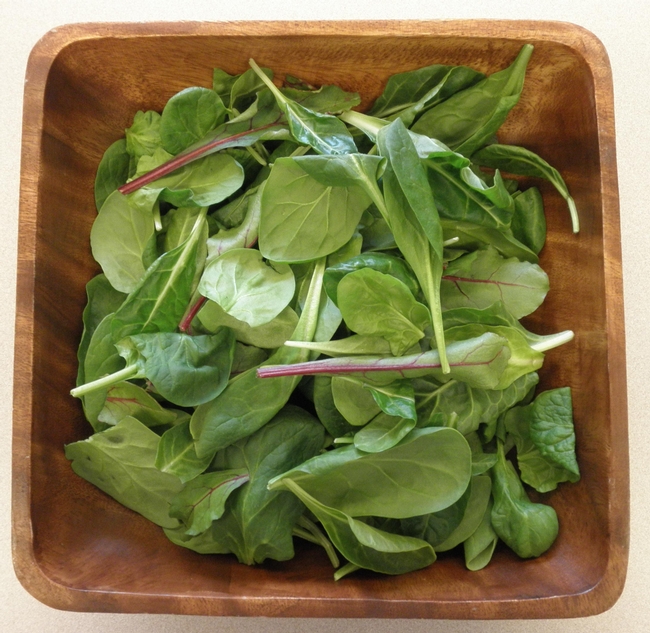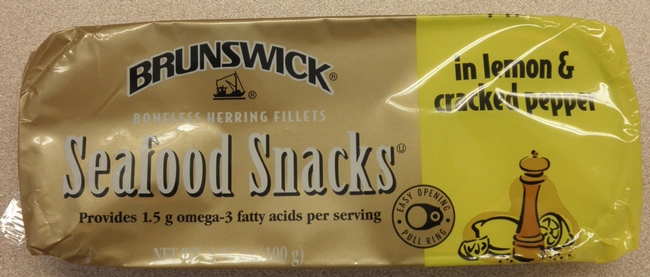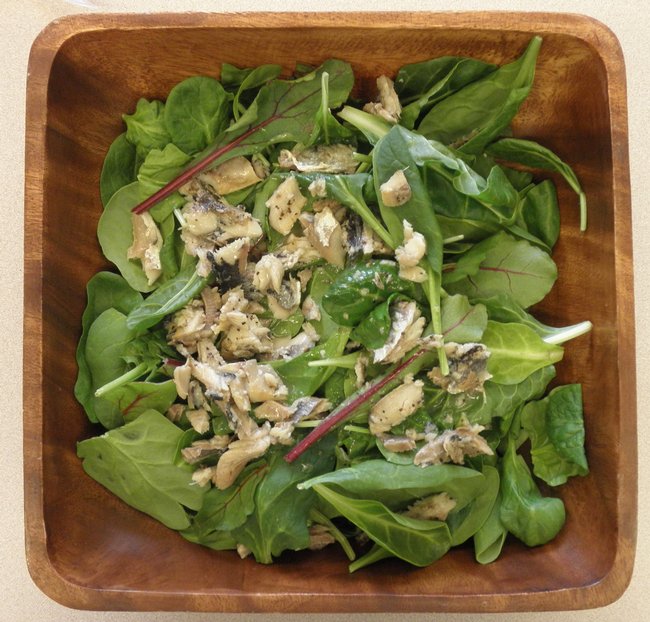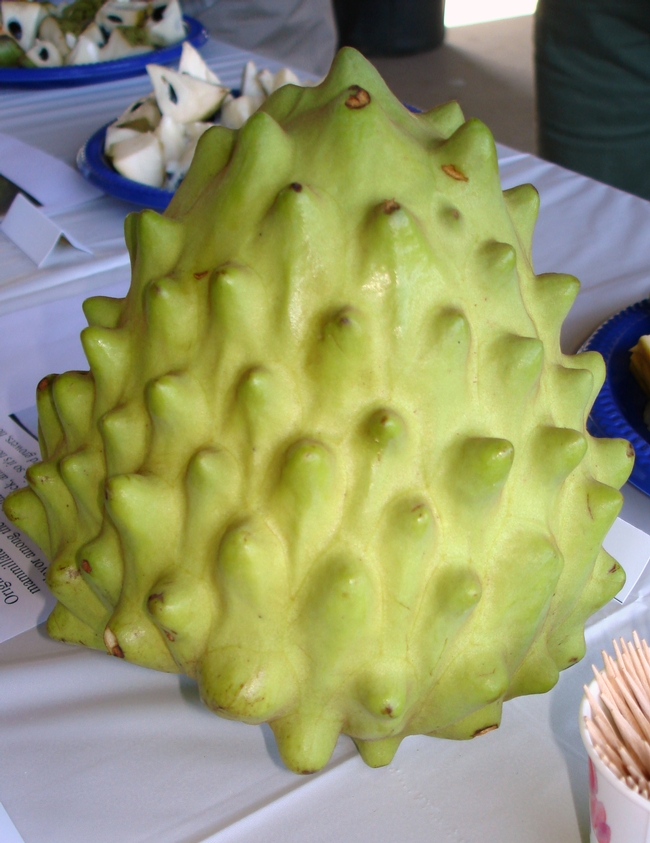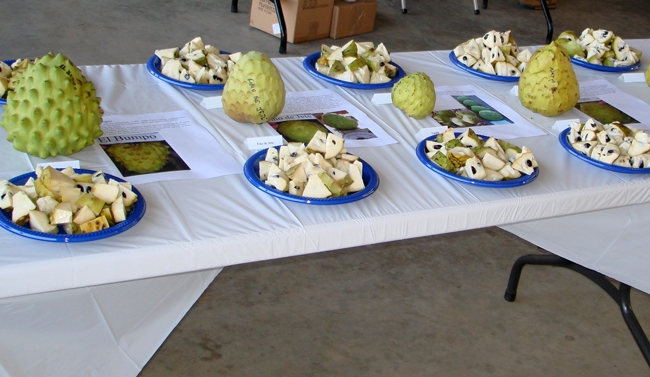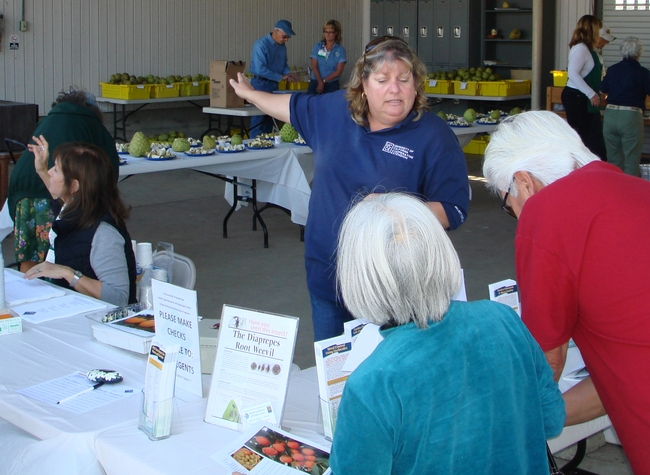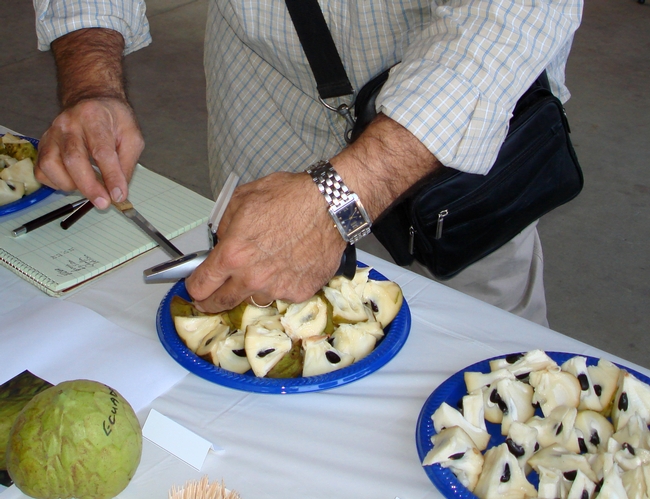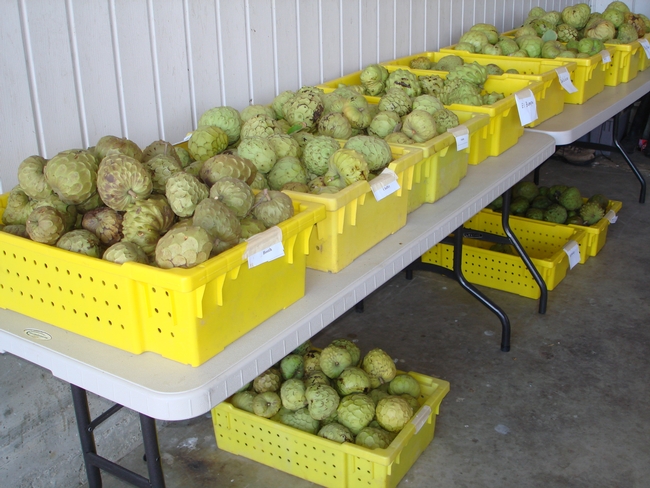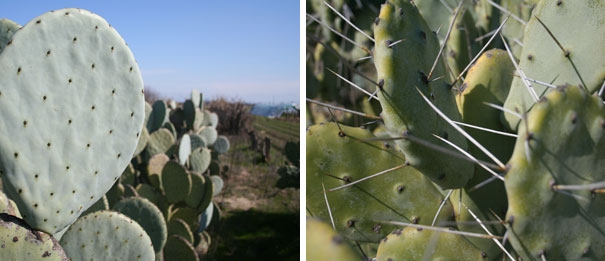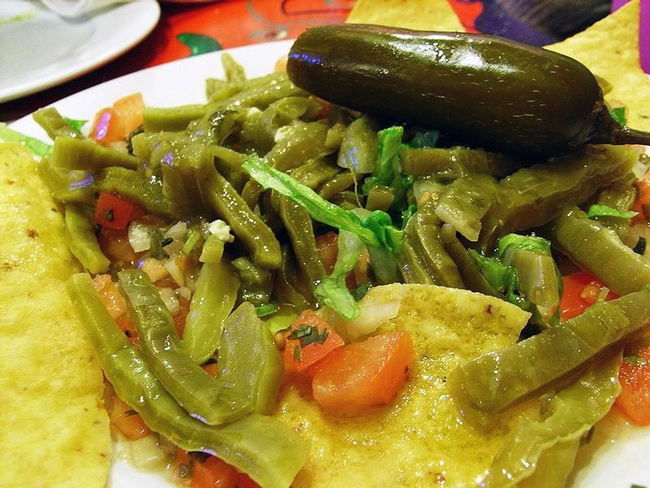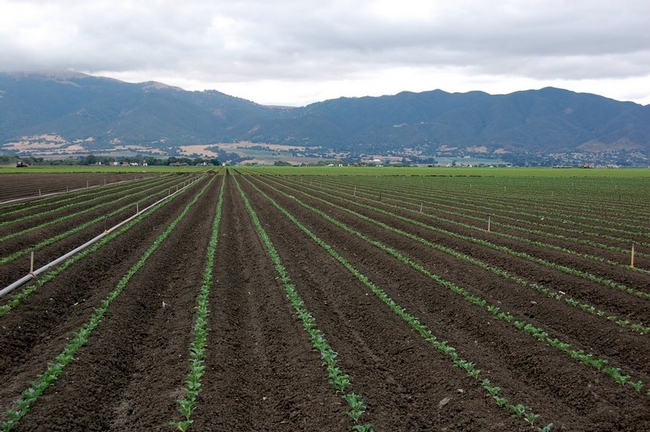UC Food Blog
A big bowl of dark leafy greens and ...
We all know that eating dark leafy greens is good for us, right? So that’s why for lunch lately I’ve been on a health kick to eat a big bowl of dark leafy greens topped with a lean protein source. I have, however, been subject to some good-natured ribbing around my office regarding my lunch selections. So I decided to research my lunch ingredients, and why I, as well as my inquisitive co-workers, already know it’s something of a power lunch, in the most nutritious of ways. First, the base of my lunch: a mix dark leafy greens (today it’s spinach, baby bok choy, and red and green chard).
The USDA describes the following general health benefits by eating your vegetables:
- Eating a diet rich in vegetables and fruits as part of an overall healthy diet may reduce risk for heart disease, including heart attack and stroke.
- Eating a diet rich in some vegetables and fruits as part of an overall healthy diet may protect against certain types of cancers.
- Diets rich in foods containing fiber, such as some vegetables and fruits, may reduce the risk of heart disease, obesity, and type 2 diabetes.
- Eating vegetables and fruits rich in potassium as part of an overall healthy diet may lower blood pressure, and may also reduce the risk of developing kidney stones and help to decrease bone loss.
- Eating foods such as vegetables that are lower in calories per cup instead of some other higher-calorie food may be useful in helping to lower calorie intake.
And specifically, dark leafy greens are nutrition-dense, with loads of vitamins (Vitamin K, C, E and B), minerals (iron, potassium, magnesium and calcium) and fiber. Additionally they contain beta-carotene, lutein and zeaxanthin, which aide in disease prevention.
Second, the toppings. I’ve left this part for the end, because those co-workers of mine thought you might not still be reading if I let you in on my super power lunch protein choice, so here it is: a can of herring.
Surprised? Yep, herring is really good (I already like herring, but I love the lemon pepper variety), and there’s no need to add dressing, just dump the whole can on your salad! Sardines, smoked oysters and tuna — all on the “Good alternative” or “Best Choice” list on the Monterey Bay Aquarium Seafood Watch — are also delicious. They’re also very convenient and relatively inexpensive, especially if you stock up when they’re on sale. Fish is a super-food of protein choices, evidenced by the USDA Dietary Guidelines for Americans 2010:
“Mean intake of seafood in the United States is approximately 3 1/2 ounces per week, and increased intake is recommended. Seafood contributes a range of nutrients, notably the omega-3 fatty acids, eicosapentaenoic acid (EPA) and docosahexaenoic acid (DHA). Moderate evidence shows that consumption of about 8 ounces per week of a variety of seafood, which provide an average consumption of 250 mg per day of EPA and DHA, is associated with reduced cardiac deaths among individuals with and without pre-existing cardiovascular disease.”
A recent USDA paper says fish consumption is especially beneficial to pregnant and lactating women: “increased maternal dietary intake of long chain omega-3 fatty acids, in particular DHA from at least two servings of seafood per week during pregnancy and lactation is associated with increased DHA levels in breast milk and improved infant health outcomes, such as visual acuity and cognitive development.” (See complete February 2012 article.) And, just as I was getting ready to submit my blog, an article entitled “Brainpower Tied to Omega-3 Levels” appeared in the NY Times. How’s that for timing!
All this is not to say that chicken breast, tofu or beans are to scoff at, but do you get your USDA-recommended two servings of fish a week? What about that recommended two servings of chicken breast? Or tofu? Even beans don’t get a mention of how many times a week you should eat them. And for this I get razzed by my co-workers. Hmmph—bon appetite!
Fruit that 'tastes like heaven'
Ever tasted a cherimoya?
Upon first taste, many Californians often argue whether cherimoya tastes like a combination of pear, banana, lemon or other familiar fruits. But Isabel Barkman, UC Master Gardener who grew up eating the subtropical fruit in her native Chile, says that’s not quite right.
“I say it tastes like heaven. The cherimoya tastes like cherimoya. It’s creamy. It’s incredible. Nothing tastes like it,” she said.
On Saturday, she helped organize a tasting of 15 varieties of cherimoya at the UC South Coast Research and Extension Center. About 120 local residents, UC Master Gardeners and members of California Rare Fruit Growers attended. Though “heaven” wasn’t an option, participants were given a scale of 1 to 5 to rate the cherimoya varieties based on exterior attractiveness, texture, flavor and overall quality.
Tammy Majcherek, who works at UC South Coast Research and Extension Center and was in charge of the tasting event, explained that the evaluations will help gardeners and homeowners better know how different varieties grow locally, before they consider planting their own.
The center has small orchards of both cherimoya and persimmon that aren’t being used for research projects, but staff members want to continue maintaining the trees and share them with the public, one way or another.
“Because of budget cuts, we've been trying to figure out ways to keep these collections going or to re-propagate some of the best," Majcherek said. "One of the things that we’re in the midst of planning is an urban horticulture extension project with a demonstration orchard, where the public can come and see the various types of trees that they could grow in this area."
Of the 100 or so cherimoya trees currently planted at the center, the best varieties would be included in the public demonstration orchard – and the results of the taste testing will eventually help staff members select which trees to plant.
The 15 varieties at the tasting were Big Sister, Booth, Chaffey, Deliciosa, Ecuador, El Bumpo, Fino de Jete, Ludica, Nata, Orton, Oxhart, Pierce, Santa Rosa, Selma and Whaley.
“I really love the Big Sister variety because the tree is kind of small and is a heavy producer,” she said. “We had a fruit from Big Sister that was the size of my whole head.”
She said that El Bumpo also produces large fruits. The varieties Fino de Jete and Nata can have excellent flavor, and this year Pierce fruits likely had the highest brix, signifying high sugar levels.
Behind the scenes, preparations for the event included harvesting the fruit more than a week ahead of time so that it would ripen.
“We picked 15 varieties the week before, and it was very stressful. Every day I was there wondering, are they going to be ripe? Are they going to be perfect for Saturday? What if they're too hard? What if they're too soft?” Barkman said. “When the cherimoya ripens, you have about two days to eat it because it will go bad really, really quickly.”
Fortunately the fruit were ripe for Saturday’s event, and extra fruit were available for participants to take home to ripen and share.
Majcherek explained this was the first time the center has organized a tasting event for the cherimoya. She was surprised that so many of the participants already knew about the fruit.
“I think they were mostly coming to the tasting just for the love of cherimoya,” she said. “I had no idea that there was such an interest.”
She plans to hold another tasting event for cherimoya next year, as well as a second tasting event for persimmons in the fall.
For more information, UC Cooperative Extension Ventura County has a page about growing cherimoya commercially and the UC Davis Postharvest Technology Center has recommendations for maintaining postharvest quality of cherimoyas too.
Information about future tastings will be posted to the UC South Coast Research and Extension Center website.
Nopales are healthful and easy to grow at home
Nopales, which can add interest to any landscape and, when harvested, a green-bean flavor to many dishes, are easy to propagate and grow in most parts of California, says UC Cooperative Extension farm advisor Richard Molinar.
Molinar has produced a sampling of spineless and spined varieties of the cactus plant at the UC Kearney Agricultural Research and Extension Center specialty crops demonstration field. Late winter, he said, is an ideal time to plan for planting nopales when the soil warms and the threat of freeze passes.
Nopales may be started from seed, however, growth from seed is slow. Propagation from pads is simpler and faster. From a growing cactus - which can be purchased at nurseries or found in landscapes of friends or neighbors - cut a pad that is at least six months old and sit it upright while a callous forms. This takes a week or two in warm weather, longer when the air is moist.
When planting the pad, settle it upright about an inch deep in a mixture of equal parts of soil and sand or rough pumice. Planting the pad too deeply will encourage rot. Anchor the pad in place with rocks to keep it upright. In areas with intense summer sun, situate the pad so that the slim side points north and south, and the broad side east and west to prevent sunburn. Do not irrigate. The moisture stored in the pad is sufficient for roots to sprout, and excess moisture may cause rot. After roots have formed (in about a month) irrigate, and allow the soil to dry completely between subsequent irrigations. Wait several months before beginning to harvest.
The ease of nopal propagation was demonstrated in Molinar's field, where pads fell to the ground, took root and began growing entirely on their own.
Feed nopales with a high-nitrogen fertilizer. In warm climates, well-tended plants may be harvested up to six times a year, and established plants may yield 20 to 40 one-half pound pads at each harvest. Remove the pads by carefully cutting them from their supporting pads. The best time of day to harvest the pads is from mid-morning to mid-afternoon, when the acid content is lowest.
A serious pest of nopales is cochineal scale. Molinar said that, at Kearney, cochnieal was responsible for the failure of several varieties of spineless cacti. The nopales with spines seemed to carry greater resistance to the pest.
"Resistance isn't related to the spines themselves, but something in the genetic makeup," Molinar said. "It was fairly obvious. We did have one or two spineless varieties that weren’t attacked either."
Over the centuries in Central America, cochineal scale was valued as a source of red dye. During the colonial period, cochineal scale was Mexico's second most valued export after silver, however, the development of synthetic pigments reduced demand.
Cooking with nopales
Fresh pads are full of water and should be bright green and firm. Collected in the garden or purchased at ethnic grocery stores and farmers markets, the smallest, young pads are the most succulent, delicate in flavor and have the fewest spines.
To prepare the pad, hold its base and scape both sides with a blunt knife to remove the spines. Peel the pads and cut them into shoestring strips or small cubes. They can be eaten raw in salads, boiled and fried like eggplant, pickled with spices, or cooked with shellfish, pork, chilies, tomatoes, eggs, coriander, garlic and onions.
For more information, see the UC Small Farm Program's Family Farm Series article on Prickly Pear Cactus Production.
UC Davis plant breeding: nurturing a rare breed
While working in Tanzania on community development projects several years ago, Iago Lowe came to a life-changing conclusion:
Food security is central to projects that make a lasting difference in people's well-being. It ensures that communities have the seeds, soil, water and environment to produce enough to eat.
However, his bachelor's degree in physics and religion from Dartmouth College did not adequately prepare him to spearhead those kinds of projects.
To address that gap in his ability to "make some small difference in the world," Lowe started doctoral studies at UC Davis in 2007 in plant breeding and genetics.
"There are so many needs in developing nations — for schools, roads, water, other infrastructure — but when the money and people leave, so often the projects die," said Lowe, who completed his Ph.D. in Plant Breeding and Genetics at UC Davis in 2011. "The few projects I saw that continued to thrive, that really made a tangible difference in people's lives, almost always dealt with local food security, seed systems, soil and water conservation and ecological restoration — projects that demanded a set of skills I didn't have. After studying plant breeding at UC Davis and that's no longer the case."
Lowe exemplifies a new breed of plant breeders at UC Davis. Long a global leader in plant breeding, UC Davis has been retooling its programs — offering new training, creating new curriculum, hiring new faculty (as the budget allows) and conducting world-class research to meet a growing demand for new crops and for breeders.
The new generation of scientists that those programs will produce — and their research breakthroughs — can't come soon enough for industry, government and philanthropic foundation leaders who say that a shortage of plant breeders is hampering efforts to alleviate hunger around the world. Hundreds of high-paying industry jobs for plant breeders are going unfilled.
“Plant breeding is such a vital tool for helping us deal with significant challenges in the 21st century such as food security, population increase, urbanization, and water and energy shortages," said Xingping Zhang, a watermelon breeder with the Davis-based seed company Syngenta. "Who is going to educate the plant breeders? UC Davis is in a perfect position to do so because it's a great center of science and technological inventions, located right in the heart of agricultural abundance. No place in the world offers the diversity of crops [like those] grown in California."
In another major nod to UC Davis expertise, the U.S. Department of Agriculture awarded $40 million in grants earlier in 2011 to develop climate-change-tolerant plants and new bioenergy sources. UC Davis scientists will lead two research teams from more than 50 universities in more than 20 states.
"Each of these projects features transdisciplinary, regional, integrated teams, including scientists from institutions that represent underserved populations," said Roger Beachy, director of the USDA's National Institute of Food and Agriculture, in announcing the grants at UC Davis. "This approach represents a new paradigm in how USDA science can best solve critical issues facing agriculture today."
You can read more about the history and future of plant breeding at UC Davis in this article in the UC Davis Magazine.
Learn more:
UC Davis plant breeding education
Story on UC Davis Department of Plant Sciences website
Seed Biotechnology Center videos on plant breeding
Survey identifies 19 produce candidates for a farm-to-WIC program
A new federal voucher that gives low-income women access to a range of fruits and vegetables could provide unique new marketing opportunities for California growers.
In 2009, the federal Special Supplemental Nutrition Program for Women, Infants and Children (WIC) began distributing monthly cash vouchers to low-income women with children to buy fruits and vegetables. The program reaches almost half of the infants and one-quarter of children under 5 years old in the United States.
A team of UC Cooperative Extension (UCCE) researchers and nutrition advisors has been exploring the possibility of developing a farm-to-WIC program that would link these low-income consumers with local growers. The purpose of such a program would be to increase the consumption of a wide variety of fresh produce, with a focus on locally grown produce when available.
UCCE conducted a survey of produce preferences and buying habits among WIC participants in Tulare, Alameda and Riverside counties in 2010. The full study is published in the January-March 2012 issue of California Agriculture journal.
Based on the results, the UCCE team developed a list of 19 produce items to promote in a possible new farm-to-WIC program. They are:
|
|
|
Although mustard greens and collards were not popular across all sites, the advisors gauged a potential market in Alameda County, so these were retained. Based on write-in responses, oranges were also added.
In California, which has the nation's largest WIC program, 82 local agencies serve about 1.43 million participants at 623 local centers, and WIC participants can redeem their monthly vouchers at 4,000 grocery stores statewide. About 40 percent shop at WIC-only stores, which stock and sell only WIC-authorized foods.
Stocking produce is relatively new to WIC-only stores; before rollout of new WIC food packages in October 2009, these stores were only required to stock limited amounts of fresh carrots. In the survey, most WIC participants (58 percent to 72.3 percent) responded that their preferred stores offered many choices, but fewer participants (18.5 percent to 41 percent) rated the produce quality as “excellent.” Key factors determining purchase decisions were produce quality and freshness, and nutrient value (vitamins and minerals). Cost was relatively less important, possibly because WIC participants procure the produce with the vouchers.
The list has served as a starting point for discussions with growers and WIC vendors.
“The survey showed that WIC participants were interested in purchasing fresh produce with better quality and more variety,” wrote lead author Lucia L. Kaiser, Cooperative Extension specialist in the UC Davis Department of Nutrition, and co-authors, in California Agriculture. “Some WIC participants that we surveyed said they avoided shopping at WIC-only stores in part because these interests were not met.”
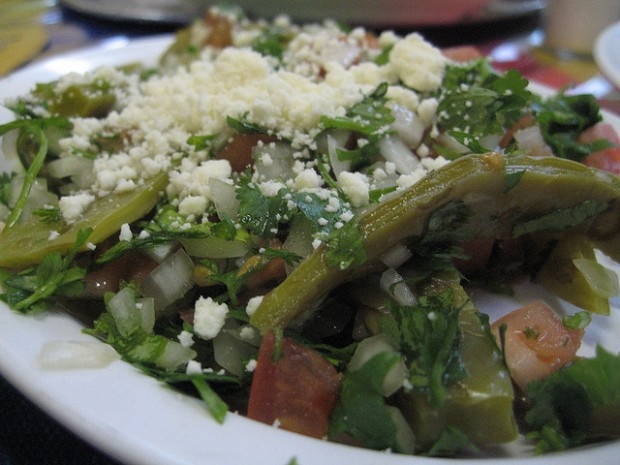
A dish made with nopales (cactus pads).


